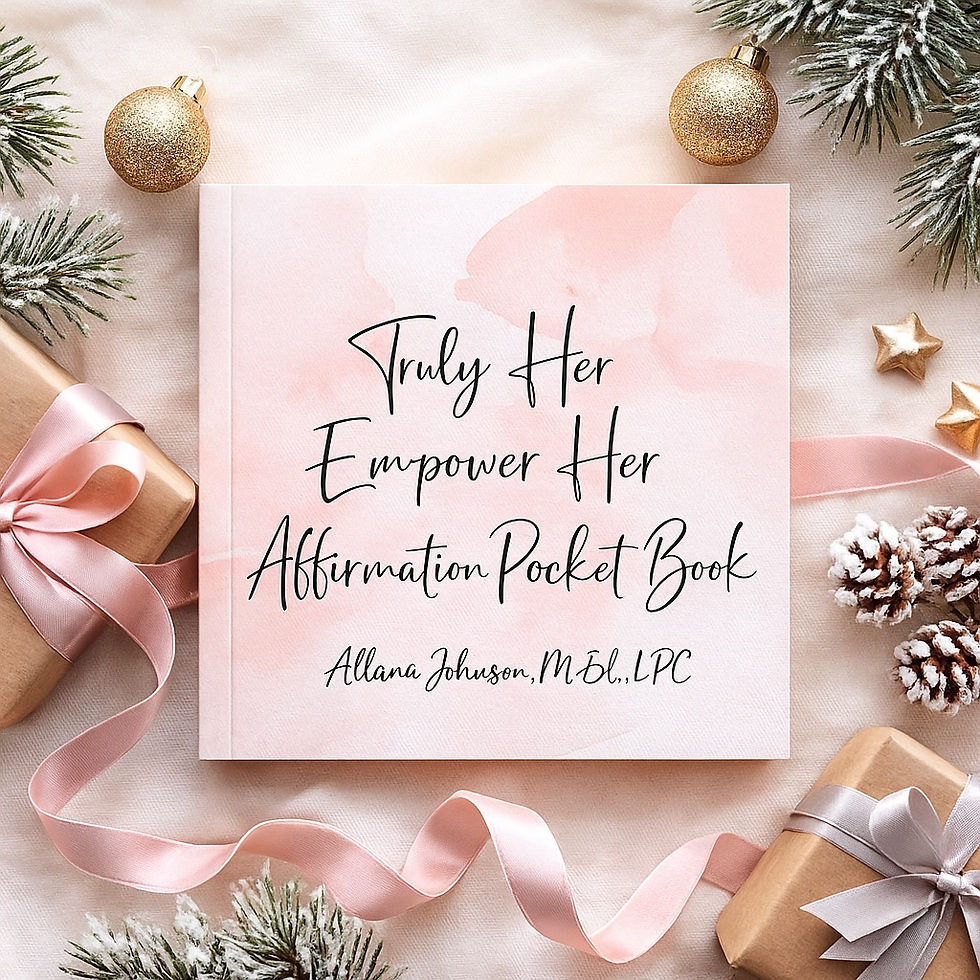What Does My Cage Look Like?
- Truly Her Counseling

- May 30, 2025
- 3 min read

Healing After a Painful Disagreement
Sometimes a disagreement with someone important to us leads to emotional distance—or even the end of a relationship altogether. When that happens, we may feel stuck in a place of unresolved hurt, confusion, or resentment. Even if time has passed, the emotional weight of what happened can continue to shape our inner world.
If you’ve found yourself emotionally “stuck” after a falling out with someone you once cared about, this post is for you. Through a gentle, reflective activity called “What Does My Cage Look Like?”, you can begin to understand the beliefs, emotions, and mental patterns that keep you feeling trapped—and discover what it might look like to move toward peace.
Step 1: Acknowledge What Happened
Begin by reflecting honestly on the experience. Give yourself permission to tell the truth—without minimizing or justifying anything.
What happened in the disagreement?
What was said or done that hurt you?
How did you respond at the time?
What boundaries were set afterward, either spoken or unspoken?
Step 2: What Does Your Emotional “Cage” Look Like?
Think of your cage as the emotional space where hurt, fear, anger, or grief have taken root. You’re not trapped because you’re weak—you’re stuck because your nervous system is still protecting you from pain.
Ask yourself:
What emotions still surface when you think about this person or situation?
What thoughts or internal stories play on repeat?
How has holding on to the conflict served you or protected you?
There’s no shame in building emotional walls. The question is whether those walls are still needed—or whether they’re now keeping you from peace.
Step 3: Identify the “Bars” – The Beliefs That Keep You Stuck
Painful experiences often lead to new (and sometimes unhelpful) beliefs about ourselves and others. These beliefs act like bars on a cage—keeping us locked in place.
Reflect on what you may have come to believe:
About yourself (e.g., “I’m too much,” “I always get hurt”)
About them (e.g., “They never cared,” “They’ll never change”)
About relationships in general (e.g., “People always let me down,” “It’s safer to stay distant”)
Step 4: Challenge the Beliefs That Keep You Stuck
Beliefs can feel like facts, but they’re often just internalized stories. Gently challenge them with curiosity:
Is this belief 100% true, all the time?
Where did it come from?
Is it based on this one situation—or older wounds too?
How does this belief make me feel?
What might shift if I believed something different?
📝 Example:Belief: “They never cared about me.”Challenge: Has there ever been a time—however small—when they showed care in their own way? Is it possible they didn’t have the tools to express it how I needed?
Step 5: What Has It Cost You to Stay in the Cage?
Holding on to pain can feel like self-protection—but it also comes with a cost.
What has this unresolved conflict taken from you?
How has it affected your relationships, your self-worth, your peace of mind?
What emotional weight are you carrying because of it?
Step 6: What Would Freedom Look Like?
Even if nothing changes externally, healing is still possible. You can choose emotional freedom—whether or not reconciliation ever happens.
Ask yourself:
If I were free from this pain, what would be different in my life?
What would peace feel like in my body, mind, and spirit?
What belief would help me move toward healing?
Try This Journal Prompt
"Even if nothing changes between us, I deserve peace. To move forward, I need to let go of _________ and begin to believe _________."
You Don’t Have to Stay Stuck
Healing doesn’t require forgetting or reconciling—it begins when we tell the truth, challenge what no longer serves us, and start making room for peace.
If this activity resonated with you, consider exploring it deeper in therapy. At Truly Her Counseling, we’re here to help you untangle the hurt, rewrite the stories that keep you stuck, and reclaim the emotional space you deserve to live free. #EmotionalHealing #LettingGo #TherapyTools #BoundariesAndHealing #TrulyHerCounseling #georgiacounselor #southcarolinacounselor



Comments